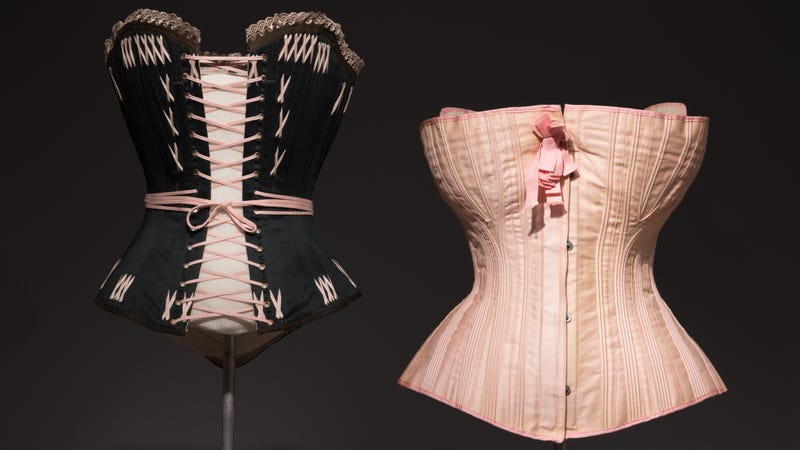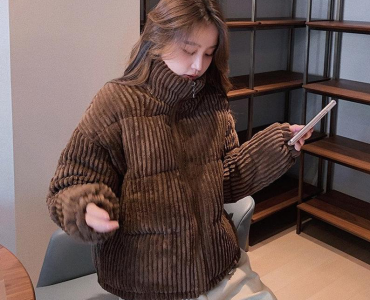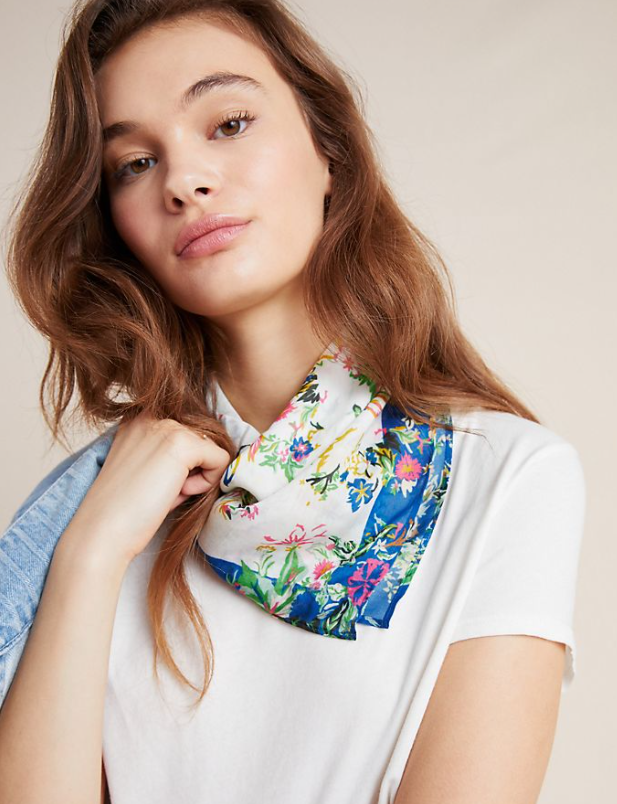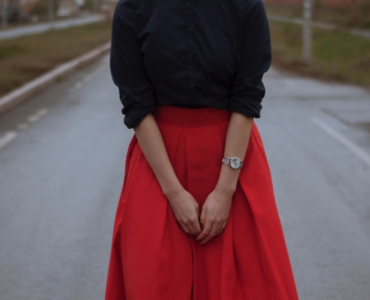
The concept of “physical enthusiasm” is a relatively new invention. But the same is true for mass-produced clothing. The body always has a variety of shapes and sizes, many of which are beyond the main norms of the time – never completely stable.
The New York City Institute of Fashion and Technology’s ongoing “Body: Fashion and Physique” demonstrates this tense roar, “exploring the complex history and various forms of the ‘ideal’ fashion body. From the eighteenth century to the present, it is considered “This is a thought-provoking history, with a two-and-a-half-century dressing history, from the early 20th century to the “stoutwear” to the modern big-size fashion for Sirlie Jones to provide Christian Siriano’s custom Oscar dress.
Yezibel told the exhibition curator Emma McClendon about her physical enthusiasm, her exhibition goals and the clothing history of the “big yard” body. For clarity and length, our conversation has been edited.
JEZEBEL: What’s your goal for this exhibit?
Emma McClendon:
The exhibition is located in a specific gallery of the museum. The goal of this space is that every exhibition we exhibit there is through a new theme, a new focus lens to show the history of fashion. This is where we showcase permanent collections. We don’t have a permanent show, you can see the same clothes hanging in the same place for decades in the same place. The clothes are too fragile. What we do is to use this opportunity to explore fashion history through a range of different perspectives, while exhibiting works that may have never been seen before or obtaining new works during permanent collections. This is the core element of any program in the space.
For this show, I hope that visitors can get it from it or do something on a broader scale, which adds a historical perspective to the ongoing discussions about the inclusiveness and physical diversity of the fashion industry. When I first started planning this exhibition, the physical positivity movement was definitely infiltration and growth, but that was about two years ago. It was amazing to see it at the exhibition and it was very accidental to see how it really thrived and grew to touch so many people and attract such a wide global audience. I hope this show can contribute in some way, and may show how certain elements of the current conversation are very novel and exciting – we see the fashion world open in a way that I don’t like, I think we used to I have seen – but there are also some aspects.
The large size clothing or “stoutwear” that was called in the early 20th century – no matter how the terms were problemd – has become part of the industry of interest in the retail industry and major fashion magazines throughout the 20th century but unfortunately, after years of hard work has declined . By showing this history, I hope that people can understand how the fashion system has evolved and built over the past 250 years so that we can ensure that the current discussion does not go away. The movements we see now can affect longer-lasting changes.
Sometimes you will look at the history of fashion, it seems that because of survival bias and other factors, the idealized outline is what you finally see in the record. Interestingly, even if it is satirical, it is frustrating to see people who have been doing ugly comics about obese women. But the evidence to see their existence is also interesting.
absolute. This is another goal of the show to introduce fragments of different sizes or different body types throughout the chronology, whether it is a child’s corset or a corset, or a maternity robes or early stoutwear or 19th century Fragments or sizes in the early 20th century are different. I think there is a misunderstanding in exhibitions or movies or magazines that makes us feel that all women in the past have a certain size. Very small. It is an idealized body. This can make us feel that we are not right now. It not only continues the ideal of existence, but each person who does not meet the ideal is either invisible, marginalized, or desecrated, but it also allows us to question our own diversity in an unhelpful way. Because the truth is that physical diversity already exists, as long as people already exist. No two people have the same body. No two people have the same shape. And this is not just a matter of scale. This is also a question of age, race, ability, and gender identity.
I want people to understand how the fashion system has evolved and built over the past 250 years, so we can really make sure that the current discussion is not closed.
Most of the content in the exhibition deals with this size problem, but it is fashionable to appear in some comics and works – it is not only designed for a specific body shape, but it has also been designed in one person’s material. A special moment in life. Or a specific type of person, they are a young, 20-year-old thin white woman who doesn’t consider how our bodies change, how they get older, how our abilities and mobility affect these processes. I am very happy that we can work with Grace Jun in the open lab to really highlight some of their projects and what they are doing there, and designer Lucy Jones, I think they really try to not only rethink how the body is different. Designing clothing at all stages of the body, while educating students and industry professionals to rethink the body types of fashion design.
Did you acquire any new pieces for your collection? One of the interesting things about “stoutwear” to me is how rarely you see it in museum exhibits. Is that difficult to find? Did you have to go looking for it?
No, our collection of early stoutwear. But you are right, these works are often more rare. In general, ready-made clothing is often less and less common. No matter what size you are talking about, more everyday clothing is harder to find.
We have seen most of the works in the exhibition. Of the things I do, most of my new acquisitions are in the contemporary part, because I really want to draw from the up-and-coming designers and brands that really give an example of how to rethink the body, how to make Their entire brand and the entire company revolve around a more inclusive view of the body, from the way they make clothing, to the way they sell clothes, to the way they show it on the runway or to market it. They are really just changing the game. So I want to end the exhibition in a more positive and encouraging way. I think there are a lot of shows that can make people feel very sad, familiar and heavy, but I want to represent people in the years, especially the end of the students – we are at the Fashion Technology Institute, we do have a lot of students involved and students through the show. I want to give them an example of people who are already rethinking this. Inspire us how we can move forward.
Part of the exhibition is that the changes you see in these seas are centered around technological advances. Just like, corsets are widely used because they can be made using machines, so they can be sold at a lower price, and this is the golden age of wearing corsets in the late 19th century. Look at this 250 years, when you see the rise of the modern fashion industry – I know this is a very complicated relationship – but you think it is more like an industry that shapes our idealized body, or a cultural concept of our idealized body What kind of industry is created?
I hope to have a clear answer. I think it’s actually more subtle and interconnected. I don’t think fashion is a reflection of culture. It is not a mirror that reflects our body’s thoughts. It is the agent of cultural change and plays an important role in the formation and dissemination of our ideals. Now, as said, I don’t think there will be more extensive changes in the other aspects of culture that will ultimately affect the fashion world. But I think the connection between them is so complicated and connected throughout history that it is very tricky to separate them.
Many of the ideas and themes in the exhibition, as well as the overall narrative in many aspects, are difficult to show in physical clothing. That’s why the video starts with all the supplements, comics and video clips and the like. But the whole theme has a profound psychological factor. Clothing is an embodiment of the practice. We wear clothes every day, we all go shopping in some way, try on clothes and so on. Regardless of their personal relationship with the clothing, everyone has the experience of entering the store or ordering some of their usual sizes online or thinking they are, then try it, it just doesn’t fit. At that moment, I felt that their body had a problem and the clothes were right. It should really be here that the body is diverse, the body is right, and the clothes are wrong. This is a fashion system. This is how it makes clothes, and how they are sold, which is the way the entire system is set up incorrectly. We need to try to separate.
This exhibition will never provide all the answers. I hope it will inspire dialogue so that we can start thinking about how to start changing the system. Because we can’t solve it until we admit that the fashion system is flawed in the body. One of the elements comes down to a standardized size. Standardized size is a double-edged sword. This is a democratization of fashion, making clothing on a large scale, making them cheaper, making them more affordable and beneficial. It opens up the entire fashion system. Over the past 150 years, we have seen the opening of fashion systems so that people can participate in fashion in ways never before possible. But at the same time, by creating standardized sizes, you can predict the idea of a standardized body, where you can let people try to put their bodies into clothes instead of body-fitted clothes. This has a strong psychological impact on how we treat our bodies, how we think about our bodies, and how we think about and think about other people’s bodies.
It’s hard to show with objects, but the concept of vulnerability and extensibility in this fashion system, how it treats the body and how it changes in many ways, but how it is trapped in the past in many ways – what is this? I hope that it can be reflected in the program.
You are talking about trying to motivate students who will continue to work in the fashion world. I want to know, to what extent do you think the fashion industry – not fashion design – is truly positive as art?
I mean, they can start with a lot of things. They can start by selling clothes of various sizes together. They can first make the brand generally reach 26 yards and then down to 0 yards instead of dividing the brands into stores. There are more editors in the magazine, more representatives on the magazine pages, and things about clothing and style, not just a woman with a naked bend.
There are a lot of things that can be done on a very basic level, and then I hope to achieve all the technological changes that have made great strides and all the changes we have seen. People in other industries can really focus on and solve these problems in the fashion industry and rethink the way we make clothing, that is, we make clothing. Innovate in the same way that they did in the Industrial Revolution to change the way and open it and make it more inclusive.
It seems that there are often such ideas, oh, what you don’t understand is that we can’t do that. Therefore, the interesting thing about the exhibition is that it clearly shows that what is often seen as a natural iron law is something that was invented 120 years ago. Do you understand? That was not a long time ago.
To be exact, this is the point. Our bodies are natural and the clothes are fabricated. This is something that is made. There are ways to change the manufacturing process. This is something we can figure out how to innovate. And I believe that fashion needs to catch up with all the other dialogues and innovations that are now taking place in culture and society, as well as discussions and debates. Fashion needs to be involved in the ongoing truly inclusive dialogue. If you don’t do this, you may be left behind and look disjointed.
I think it’s important to emphasize that I really want to end with contemporary designers who can provide inspiration and are doing everything they can to change the status quo because I think fashion is system based. And I think it’s worth blaming those who do wrong, because the entire system has been established for centuries. I think it’s more important to celebrate, highlight and support those who show that they can be done in different ways and use them as positive and encouraging examples, rather than calling everyone who is doing it. error. Because it is indeed an action that other industries are experiencing.
It seems that a broader rethinking is now taking place, but I think that as a shopper I want more places to buy clothing, sometimes we will see that the participation of these concepts is very shallow. As you said, this is a naked woman who bends in shape problems. Just like, come on. That is not very radical.
Yes, it is just a visual metaphor that has been handed down for centuries. We are used to seeing that we are very comfortable to see “big woman” or “curved woman” or “physical woman” or the euphemism you want to use – we used to treat these bodies as Rubens’s nude and understand Their beauty and such aesthetic value. Whenever you see a nude plus size model, it will work again. It will be more inclusive and progressive and encourages the display of these women in editorials. Instead of separating them out and fully displaying their bodies, they are placed seamlessly in the editorial, just as you would any other model.
And also highlight the clothing. Since these departments in the industry are between straight and positive sizes, this means that there is no or only a few plus labels in the haute couture dialogue, so not only has a plus size body is not a fashion concept but plus Large size clothing that can be worn by a large size is not really fashionable.
At the end of the day, this is what I hope to achieve in the video, this is a marketing opportunity. Many of the speakers in our video, including Christian Siriano, he said very frankly, you know that everyone is bankrupt, which is why you went bankrupt. Because all these designers have not created clothing for most people. From a business perspective, this is really crazy. Another reporter asked about this digital flattery and all these discussions about how to wear bodies of different sizes and shapes, asking about the true freedom and inclusiveness of the industry. I really think that the true freedom and inclusiveness of the industry looks like everyone has the same choice and the same style, aesthetics and clothing. Clothing is increasingly dependent on shaping itself and your identity, so until we give everyone – no matter how old they are, no matter how old they are, no matter what their abilities, no matter what gender identity or race they are, they can use the same The style and look, buy them and find the place to buy them – until the time industry is operating in an exclusive and marginal way.
The Body: Fashion and Physique runs through May 5 at the Museum at FIT in New York City.


